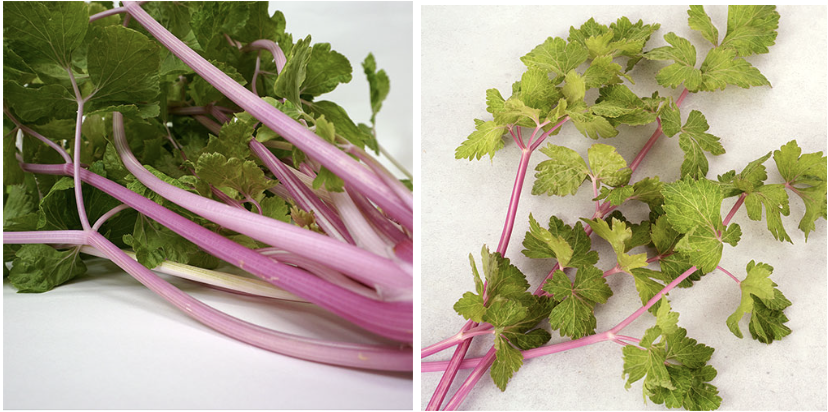Pink Celery
Latin name: Apium graveolens
🌱 Days to Sprout: 12-20
😋 Ready for Full Dose of plant food with true leaves or roots .5-inch long
✂️ Thin to: 1 plant per yCube
🍅 Days to Maturity: 75-100
💡 Light Zone: Medium
📏 Plant Size: 1 ft
💚 Care Level: Intermediate
Origin
Native to northern China, Pink Celery is believed to have originated from wild celery during ancient times, eventually making its way to Europe through trade routes. Despite a brief surge in popularity during the 19th century, it is currently a rare variety not commercially cultivated and can typically only be found in home gardens and specialty farms.
Qualities
Smaller than the European celery that is more commonly available, Pink Celery features slender pink to fuchsia stalks and frilly green leaves. It has a robust herbal taste when raw but becomes sweet, tender, and crisp when cooked. Rich in vitamin K, potassium, magnesium, calcium, manganese, and antioxidants, Pink Celery's leaves also offer vitamin A for skin health and eye protection.
Use
While not typically eaten raw because of its stronger flavor, Pink Celery fans enjoy adding its stalks to salads, grain bowls, or as a fresh garnish. Pickling is a fun option for a unique addition to dishes, and both the leaves and stalks offer versatility in cooking methods like stir-frying, braising, and boiling.
Care & Harvest
🌱 Germination: Germination and early-stage growth is slow, but once the plant is established it's a prolific producer.
💡Temperature: Prefers cooler temperatures (70-75°F).
✂️ Pruning: Check the roots monthly and trim any that are brown or extending past the yPod.
🔎 Plant Health: Expose to plant food as early as 10 days after you first saw germination.
🌱 Harvest: Wait to harvest stalks at the base until they’re around 6 inches tall or more; the longer you let the stalks grow, the thicker they get. For continuous harvests, trim larger, outer stalks, always leaving 1/3 of the plant to continue growing. You can harvest just the leaves earlier, but still be sure to leave ⅓ behind to let the stalks continue growing. For a one-time harvest instead, wait until the plant reaches maturity, then cut at its base.
Our Plant Health & Nutrition Team thoroughly tests each variety we offer to bring you the most flavorful and high-quality plants. We regularly rotate our plant portfolio, so please note, availability varies.

